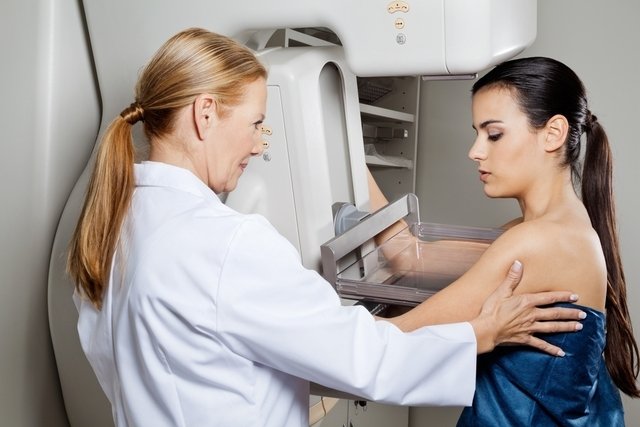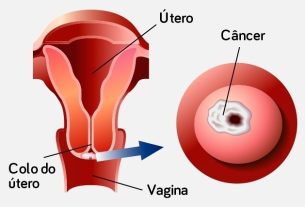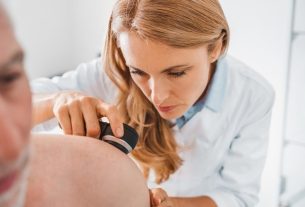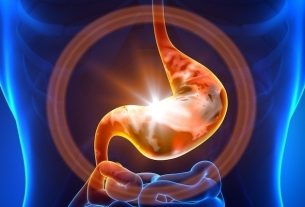A breast lump is a small lump that can appear in the breast and, in most cases, is just a benign change, such as fibroadenoma or a cyst, which normally does not require treatment.
Cancer is usually only suspected when the nodule has malignant characteristics, such as causing changes in the size and shape of the breast, or if there is a history of breast cancer in the family, especially in first-degree relatives.
If the presence of a lump is noticed in everyday life or during breast self-examination, it is important to consult a mastologist and carry out tests such as ultrasound or mammography, so that the doctor can identify whether the lump is benign or malignant, and define the more appropriate treatment.
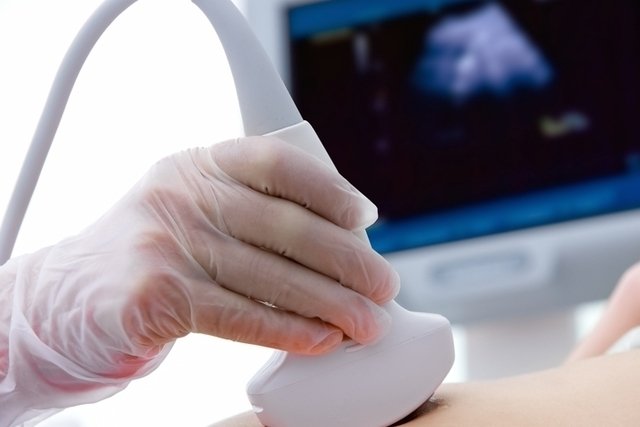
What can cause a lump in the breast
Some of the most common causes of a breast lump include:
1. Fibrocystic changes
Fibrocystic changes are the most common cause of breast lumps and are related to hormonal changes in a woman’s body, especially during the menstrual period or when being treated with some type of hormonal medication.
Nodule characteristics: It normally appears in the week before the menstrual period and disappears one week after the end of the period. They may appear as painful, hard nodules, appearing in just one breast or both.
Don’t ignore your symptoms!
Cysts generally occur in premenopausal women over the age of 40, being a non-serious breast change that rarely turns into cancer and does not require specific treatment.
Nodule characteristics: They are more common in both breasts and can change size during the menstrual period. Furthermore, they can also become painful when a woman ingests caffeine through coffee, tea or chocolate, for example. See all the symptoms of breast cysts..
3. Fibroadenoma
Fibroadenoma is the most common type of breast lump in young women aged between 20 and 40 and is caused by the exaggerated growth of glands that produce milk and breast tissue. Find out more about breast fibroadenoma.
Nodule characteristics: They have a rounded shape, are slightly hard and can move freely around the breast, not remaining fixed in one place. Furthermore, they generally do not cause any pain.
4. Lipoma
Lipoma results from the accumulation of fatty tissue in the breast and is therefore not serious and can be removed through surgery for aesthetic reasons only.
Nodule characteristics: they are soft, similar to small pads of fat, which can move around the breast. However, in some cases lipomas can also be hard and can be confused with breast cancer.
5. Breast infections
Some breast infections, such as mastitis during pregnancy, for example, can cause inflammation of the tissues and ducts within the breast and lead to the appearance of nodules. See more about mastitis..
Nodule characteristics: They normally cause pain in the breast, especially when pressed, and can lead to redness at the site of the lump.
6. Diabetic mastopathy
Diabetic mastopathy is a rare and serious type of mastitis, an inflammation of the breast that causes pain, redness and the appearance of one or more lumps in the breasts, which can be confused with cancer. This disease only appears in people with diabetes who use insulin, affecting mainly women.
Nodule characteristics: Hardened tumors appear that are painless at the beginning of the disease, and blisters and pus may also appear on the skin.
7. Breast cancer
Breast cancer is a disease that can initially manifest itself through the appearance of a lump in the breast, which may be accompanied by other changes in the breast, such as changes in the color and/or shape of the nipple, fluid leaking from the nipple, changes in the skin , frequent itching of the breast or nipple. Know all the symptoms of breast cancer.
Nodule characteristics: It does not cause pain, is hard, has an irregular shape and is different from the breast tissue around the lump.
Tests to identify the type of nodule
The most commonly used tests to diagnose the nodule are mammography and ultrasound, but the doctor can also use breast palpation during the consultation.
The result of the mammogram is standardized, using the BI-RADS classification system and, therefore, the result of the exam can be:
- Category 0: exam was unable to characterize changes and other complementary tests are necessary;
- Category 1: normal result, to be repeated in 1 year;
- Category 2: benign changes, without risk of cancer, and must be repeated in 1 year;
- Category 3: changes that are probably benign, with a risk of cancer of 3% and it is recommended to repeat the exam in 6 months;
- Category 4: changes suspicious of malignancy and the risk of cancer is 20%, requiring a biopsy and anatomopathological evaluation of the breast tissue;
- Category 5: probably malignant changes with a cancer risk of 95%, with surgery being indicated to remove the change, with a preoperative biopsy being possible;
- Category 6: established breast cancer diagnosis.
A hypoechoic or hypoechoic breast nodule is just an expression that appears in imaging test reports, not indicating the severity or malignancy of the nodule.
Breast lump treatment
Breast lumps normally do not need any treatment, as they do not cause any change in the patient’s health and do not increase in size.
However, when the nodule is very painful or very large, the gynecologist may recommend taking a contraceptive pill specific to the type of nodule or suctioning the nodule to alleviate symptoms.
In cases where the nodule presents malignant characteristics, treatment should be indicated by an oncologist or oncological surgeon taking into account the stage, type of cancer and response to hormones.
Breast lump in man
A breast lump in men is generally associated with male breast cancer, but it can also be benign and, therefore, when noticing the presence of a lump, the doctor should be informed to carry out diagnostic tests to identify the condition. origin of the nodule.

Sign up for our newsletter and stay up to date with exclusive news
that can transform your routine!
Warning: Undefined array key "title" in /home/storelat/public_html/wp-content/plugins/link-whisper-premium/templates/frontend/related-posts.php on line 12
Warning: Undefined array key "title_tag" in /home/storelat/public_html/wp-content/plugins/link-whisper-premium/templates/frontend/related-posts.php on line 13

